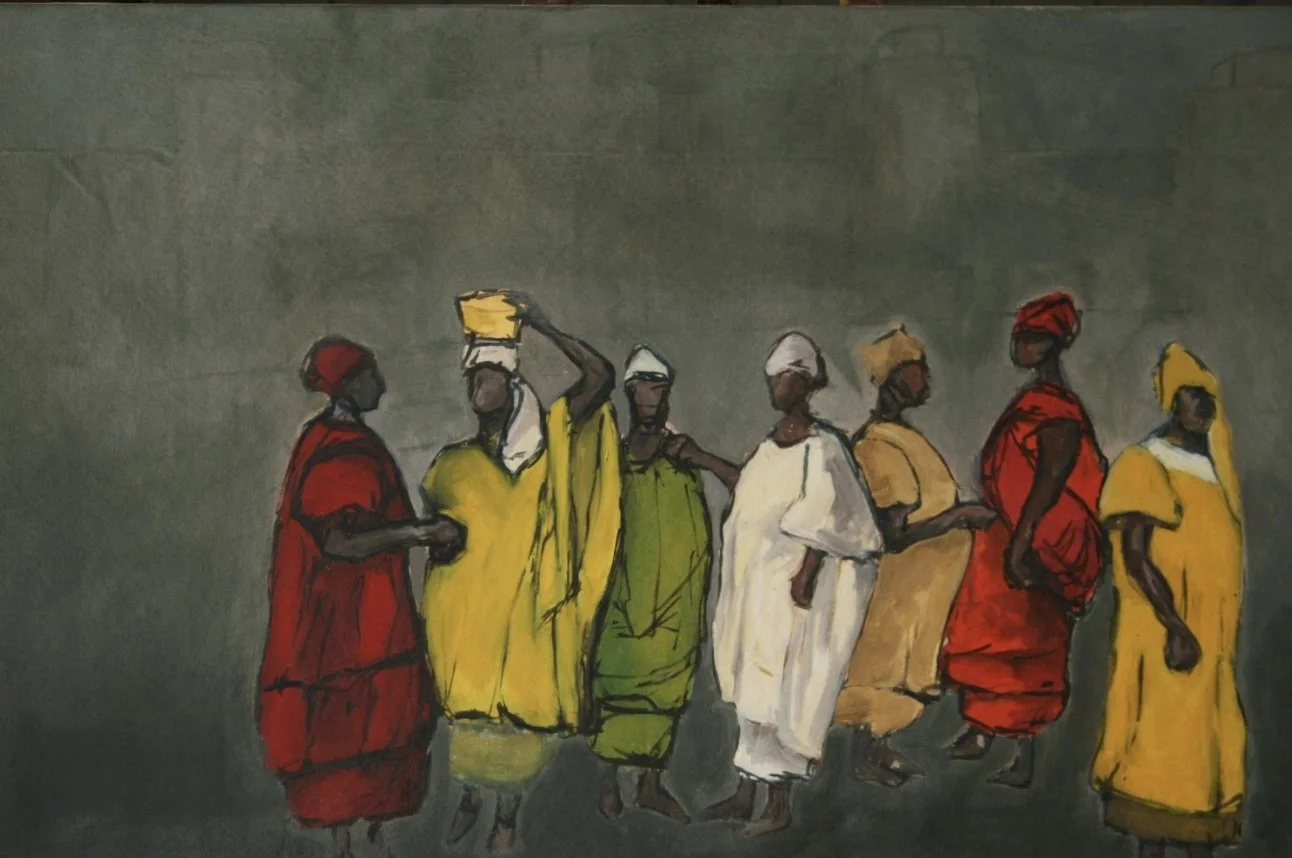Unveiling Invisible Cities - 100 Years of the Ben Franklin Parkway
Interview with Inliquid by Elizabeth Roan
Of the many things to inspire her creativity, cities are top of the list for Maria Schneider. A native of Madrid, Spain, she is no stranger to the beautiful chaos that makes a city so alive: everything from their infrastructure, the tapestry of people, down to their history—especially history that is often forgotten. Thus creating her latest series of work, Invisible Cities.
“There is always a part of a city that one does not want to see and usually overlooks,” Maria says as she describes three diptychs she created titled Invisible Cities: The Benjamin Franklin Parkway Series. Installed in the North Tower of Park Towne Place, Maria describes her work as “complex images offering a look into the past as a way to understand the present.” Commissioned by AIMCO to be part of Park Towne Place’s permanent collection and in celebration of Benjamin Franklin Parkway’s centennial, Invisible Cities: The Benjamin Franklin Parkway Series displays multiple layers of the architectural progress of Philadelphia, representing both the upswings of urban development and the preceding ghosts, shown through laser etched lines on plexiglass illuminated by LED lights, of what is no longer there.
Illustrated onto each diptych’s panels with thick, dark, line, are the historical landmarks currently on the Parkway: The Cathedral Basilica of Saint Peter and Paul, The Free Library, The Rodin Museum, The Philadelphia Museum of Art, and parts of the Water Works. Off-centered, in a slightly lighter shade of blue, are faint lines showing a windswept idea of what exists in the modern era, such as Park Towne Place and the Barnes Foundation. Illuminated by LED lights are the invisible structures: The Great Central Fair that happened in the summer of 1864—which was a fundraiser for the United States Sanitary Commission—homes that were demolished in the construction of the Parkway—it was ruled that everything from City Hall to Fairmount Park was to be demolished—and one of Philadelphia’s hundreds of manufacturing companies, the former forefront of what made Philadelphia the world’s greatest workshop.
As a visual artist, Maria rejects the idea of being a critic of development and urbanization and says she is a mere spectator of not only Philadelphia’s evolution but of many. She says, “every time you create something new, unless it is raw land, you have to take something off.” Philadelphia is just one of her many observations: Casablanca, Dubai, Paris, and London are just a few of the many great cities she has created urban narratives of in her work.
Maria Schneider’s Invisible Cities: Benjamin Franklin Parkway Series from InLiquid on Vimeo.
With a unique history of its own, the Ben Franklin Parkway is certainly no Champs Élysées–and that is not a bad thing. What it is, according to Maria, is a “dialogue,” between current residents and the imprints left by the many structures that once stood there: homes, fundraisers for great causes (it’s been said that President Lincoln gave autographed copies of the Emancipation Proclamation ash e Great Central Fair), and American industry. Maria assures that “The Parkway was created to unify the city,” and that, “everything was built up on that history by taking what is old and making it a revitalization of the city.” Today The Parkway stands as a hub where cultures meet, a destination for classic art to be seen, and the center of social-gathering. After eras upon eras of flaneurs sauntering its sidewalks to the modern-day hustling of commuters, and the strolling tourists from City Hall to the Philadelphia Art Museum’s monumental steps, The Parkway’s mission is a marriage between its history and newly established venues for our beloved memories shared.


